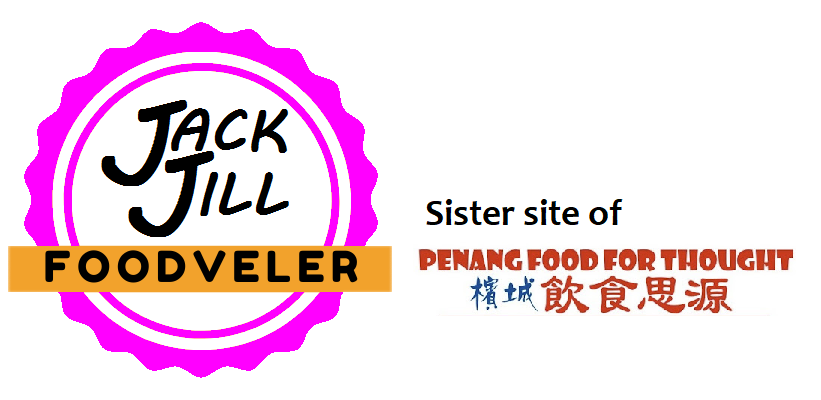Update: This business has ceased its operations.
Al Medina Moroccan Restaurant (مطعم المدينة) is located adjacent to Copthorne Orchid Hotel Penang in Tanjung Bungah. The premises of this Middle Eastern restaurant is a residential house with spacious lawn on two sides. Ample parking is available around the building.
The lawn’s landscaping is quite impressive. Placement of ornaments and potted plants gives an exotic appearance.
The lawn has a number of bamboo huts with attap (nipa palm) roofs to cater for outdoor dining. However for our visit today, the idea of sitting under a hot sun during high noon is not a viable option. I guess the huts are more practical during the night time.
We selected an indoor dining table instead. As you can see, the interior is decently furnished with Middle Eastern-themed ornaments. A hookah (حقہ) section is also available, but thankfully we are non-smokers and there aren’t any around either.
As recommended by our waiter, we ordered a serving of Couscous Lamb (لحم کوسکوس, RM32.00) which is served in a lidded clay pot. The lid is tall and conical in shape; I wonder why it has to be so.
Couscous (کوسکوس) is a traditional North African dish based on semolina, which is made from small granules of durum wheat. The semolina is moistened with water and hand-rolled to form small pellets. This is followed by a sprinkle of wheat flour to prevent the pellets from sticking with one another. The pellets are then sieved so that pallets which are too small fall through. Rejected pallets are rolled again. The process repeats until all semolina has been made into granules with the right size.
The traditional process of making couscous is labor intensive. However, nowadays the manufacturing process has been largely mechanized. I seriously doubt that Al Medina hand-rolls the couscous; otherwise the labor cost is simply too expensive!
Couscous is cooked in a two-tiered metal pot. The base layer contains some kind of meat or vegetable stew. Couscous sits in the upper layer where it is cooked by steaming action. Apart from being heated by steam, couscous also absorbs the flavors from the stew below, thus giving the former an appealing fragrance and taste. The couscous is loose in texture and very light on the mouth.
For our order of Couscous Lamb, the dish is served with lamb stew with several chunks of lamb ribs. The mutton gravy is very strong and appetizing, yet not too spicy compared to Malay or Indian cuisine. As for the lamb, the mutton is quite juicy and soft due to extended stewing. Significant proportion of the lamb is actually rib bones, therefore the amount of actual meat is pitifully inadequate for our enjoyment.
The dish is also served with carrots, potatoes and cucumbers, which are also part of the mutton stew. Particular, the use of carrots is the right call because carrots impart their sweetness and refreshing sensation to the mutton stew.
The Couscous Lamb is served with a small bowl of curry. The spiciness level is moderate, but we feel that the curry is quite unnecessary as the lamb stew is already very flavorful to begin with.
Our second dish is the Kabsa Chicken (دجاج كبسة, RM22.00). Kabsa (كبسة) is a popular Arabian dish which consists of rice, meat, various spices and gravy. The ingredients are usually mixed and eaten together rather than being consumed separately.
A piece of grilled chicken plays the role of the meat in this kabsa dish. The chicken is quarter-bird, consisting of thigh and drumstick. The chicken is reasonably good in taste, thanks to the spices and the right amount of heat.
Rice used in this Kabsa dish is long-grained basmati rice. Basmati rice is quite common in Indian, Pakistani and Middle Eastern cuisine. The rice grains are generally softer, less glutinous and better in absorbing flavor from gravy. In this case, the rice has already been infused with flavors of spices and gravy. The overall taste of rice is reasonable, although not particularly fantastic.
A bowl of soup is provided to compensate for the mostly-dry cooking thus far. However, the soup is simply too salty for our comfort.
The small serving of chili sauce is quite similar in composition and taste as those served with Hainanese chicken rice. The sauce is quite watery and has a strong garlic flavor.
There is also a serving of condiment which appears to be based on yogurt. The taste is mildly sour. This sauce is not something we encounter very often. Despite the novel taste, we think that the sauce goes well with neither the chicken nor rice.
We ordered a glass of hot Arabic Tea (شاي عربي, RM1.50). The tea is moderately strong, though not nearly as strong as some Chinese tea blends. Some mint leaves are added into the drink for a cooling aftertaste. We have no qualms with the taste of this Arabic Tea, but the drink should really come in a larger glass, or to be available for refills.
Another beverage that we ordered is a glass of Bandung (باندونج, RM2.20). This is actually a local drink made from rose-flavored syrup and milk. It does not take a genius to realize that mixing red with white gives the color pink. As expected, the drink is quite sweet but nothing really to shout about.
What is the verdict of the day? While the couscous dish is quite a delicacy, the kabsa fails to leave a lasting impression. The price is quite hefty for the amount served. But this can be forgiven if the food were to be made bigger to justify the price tag.



